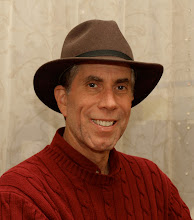In the late 1930’s, an annual race called the Rough Water Swim took place in Southern California. It was a popular event hosted by radio personalities Fibber Magee and Molly. Swimmers fought through two and a quarter miles of powerful waves and currents around Balboa Island. Those swimmers included Florence Chadwick, who also swam the English Channel. The actor Buster Crabbe often did the Rough Water Swim, his enormous feet propelling him to victory.
Another regular contestant was a scrappy young carpenter named Donald W. Tosh. With tremendous energy and upper-body strength, Don became a presence in those races, even winning a few.
After service in the Navy during World War II, the ambitious young Scotsman wooed and won the lady LaVonne, and they began a life together. The Toshes built and operated a chain of hamburger stands at Huntington Beach, did well, and went on to other ventures. In the mid-1970’s, I came to work for them at a place called Big Sur Lodge.
Don was a man’s man, affectionately known to his children as “Archie Bunker.” His political views lay somewhere to the right of Rush Limbaugh, and he made no apologies for that. Working for Don quickly yielded some basic truths: there was the right way, the wrong way and Don’s Way. And if you didn’t like it, you’d better get out of the way, because Don would shove you aside and do it himself. He was a man accustomed to hard work.
Don owned some mountain property near the Lodge in Big Sur. He was building a gravity-feed water system up there, consisting of several tanks and a network of steel pipes. In summer, we young men liked to boast of long, hot days hauling pipe up the mountain. Yes sir, that was man’s work.
In wintertime, when the rains came and the days grew incredibly short, things at the Lodge slowed down; but Don, the Workingman’s Man, always kept us busy. And so one dark, cloudy day in January, Don said we should all go up the mountain and pour a pad for one of his water tanks. Someone pointed out the threatening clouds and suggested it might be best to wait for a sunnier day. But one look at our boss gave us the answer, and off we went.
There was me, Tom, Bill, Mark, Phil the maintenance man, and of course, Don. Phil loaded up his personal truck, a beautiful, 1970 Dodge 3/4-ton pickup, while the rest of us climbed aboard another Lodge vehicle. We rode a short piece down Highway One, turned off at Don’s private gate, and began the slow climb up the skinny dirt road that Walt Trotter had carved out of the mountain with a D-9 Caterpillar. Like most Big Sur back roads, there was no margin for sloppy turns, no room for a lapse in concentration. Any mistake like that would send you right off a cliff. The road wound up the rugged west face of the mountain, around the other side through many redwood trees to the top, yielding a wondrous view of the lush Big Sur Valley below and the great Pacific Ocean beyond. Going up there brought a mix of enjoyment and dread: while it meant a welcome break from the routine, we also knew that mountain work was a time for us to really earn our keep.
On this gloomy January day however, there were no pipes to haul, no heavy tanks to erect. Just a simple, ten-foot concrete pad to be poured. Easy, right? Sure — although we did these from scratch using shovels and a wheelbarrow, hauling water from another part of the mountain.
The dark clouds converged above us, knitting themselves together ominously as we toiled below. At two o’clock, they released a cold, menacing drizzle. Working shoulder-to-shoulder with the rest of us, Don shouted, “Work faster!!” And we did. We mixed and heaved and poured and spread with model efficiency.
By three o’clock the drizzle had thickened to a solid, steady rain. To compensate, Don ordered us to use less water. All of us were cold and wet, hoping the rain would let up, our clothes and shoes covered in mud and cement.
The clouds finally stopped toying with us and unleashed a raging downpour. It soaked us to the bone and turned the road into a slippery mess. Phil’s prized pickup got stuck twice, and its rear wheels machine-gunned great clots of mud into our faces as we struggled to push it free. The second time this happened, the shiny blue Dodge glanced off the embankment, scraping a fender. Phil was not pleased.
At four o’clock we were finished. Totally. I stood beside Don as the rain pelted our freshly poured cement, now a pockmarked ruin. It looked like the surface of the moon. Don, hair plastered onto his head as water dripped from his eyebrows and the tip of his nose, tried in vain to light a cigarette. He looked at me, gave his characteristic chuckle and said the only thing left to say:
“Well...maybe this wasn’t such a great idea.”
You know, I couldn’t really be mad at him. Another, more cynical employer once said to me, “I pay for all the mistakes around here, including my own.” Don paid the price on the mountain that day, and he acknowledged it fully.
You gotta love a guy like that.
THE END


